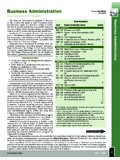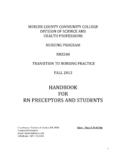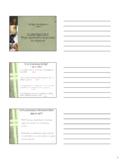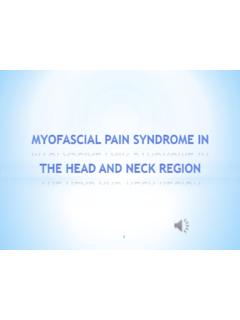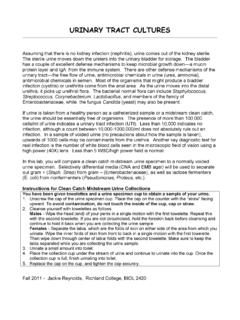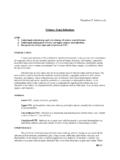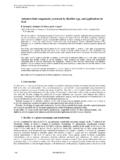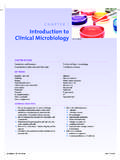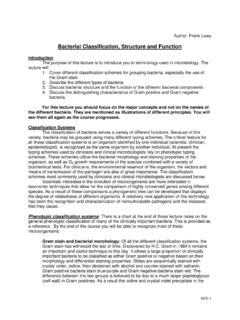Transcription of Professor Diane Hilker - MCCC
1 Professor Diane Hilker 3: Collection of Microbes 1. Isolation of molds 2. Isolation of bacteria Where you successful in isolating molds? Pure Culture Not a Pure Culture Where you successful in isolating individual bacterial colonies with the T-Streak method? Colony: a visible mass of microbial cells originating from one cell. Mixed Culture Broth: 3 types of microbes Med., pink-red, creamy colonies: Serratia marcescens Large, beige, dry-like colonies: Escherichia coli Small, pin-point or dot-like, white colonies: Staphylococcus epidermidis Mixed Culture Broth: 3 types of microbes Serratia marcescens Escherichia coli Staphylococcus epidermidis Professor Diane Hilker Purpose: To become familiar with several staining procedures and to compare morphological features, such as size & shape of various microbes.
2 Today: 1. Wet Mount 2. Heat Fixation: required prior to staining 3. Simple Stain 4. Gram Stain 5. Review Stains: Endospore, Capsule & Acid-Fast Stains Wet Mount: observing living cells Motility and size of cells Place 1 drop dH2O on center of slide Using a sterile loop, remove a small amount of growth from the colony. Mix cells in the drop of H2O; spread to inch Focus on edge of coverslip with scan (dim light) Move toward center of slide Observe under low & high powers Slides will dry out quickly Wet Mount Bacteria: E. coli Must observe under 400x Very small & motile Looks like specks of sand Hard to discern shape Smaller than yeast & protozoa Instructor to provide demonstration & instructions Heat Fixation Done prior to staining a slide Done for 2 reasons Allows organism to attach to the slide Kills microbe by denaturing proteins Refer to Lab Manual for directions Instructor to provide demonstration & instructions Simple Staining Stain bacteria to make them more visible One reagent: crystal violet All cells will stain blue/purple Must be viewed under oil-immersion Allows you to see: Shape Size Arrangement Shape & Arrangement Size: large or small cocci long or short rods/bacilli Staph.
3 : cocci in clusters E. coli: rods, no arrangement Refer to Lab Manual for directions Instructor to provide demonstration & instructions Gram Stain: also see size, shape & arrangement Differential stain: stain pink/red or blue/purple 4 Reagents: Primary Stain-crystal violet Mordant-iodine Decolorizer-ethanol Counterstain-safranin (red) Results: Gram + bacteria: blue/purple Gram bacteria: pink Why? Cell wall composition (PG) Gram Stain: must view under 1000x Gram Stain Staph: Gram positive E. coli: Gram negative cocci in clusters rods (no arrangement) Refer to Lab Manual for directions Instructor to provide demonstration & instructions Review of Other Stains Endospore Allows the organism to resist adverse environmental conditions: heat, cold, chemicals, radiation, drought, starvation Malachite green & safranin as you heat slide Clostridium sp.
4 & Bacillus sp. Review of Other Stains Capsule: virulent Allows the organism to resist host defenses: lysozyme & phagocytosis Mucopolysaccharide outer coat Negative stain since you stain the background India Ink stain Pasteurella multocida Review of Other Stains Acid-Fast Stain: AFB Cell wall contains wax Carbolfuchsin stain & heat Mycobacterium tuberculosis & M. leprae Acid fast positive: cells stain red Acid-fast negative: cells stain blue
